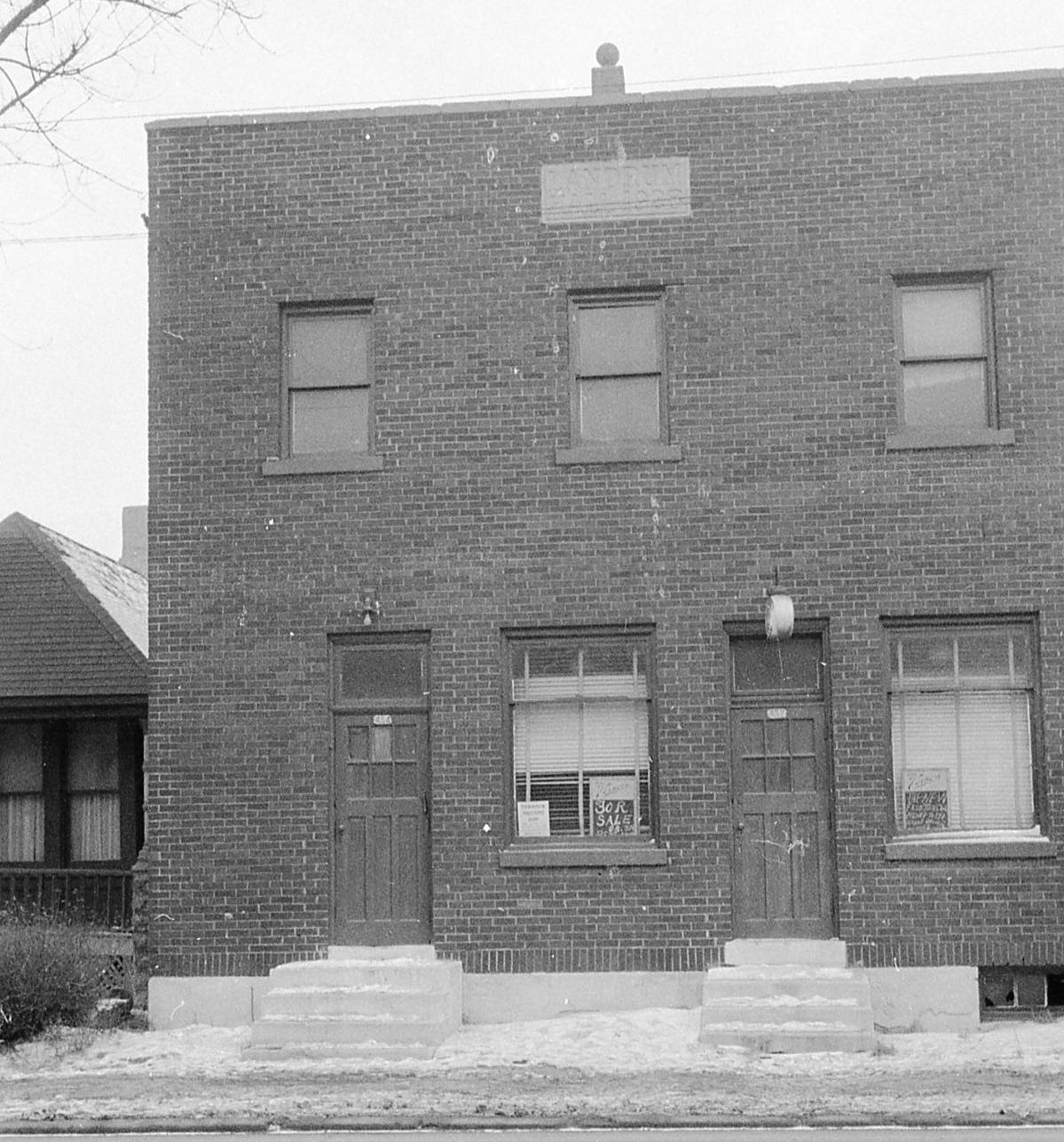McDougall Street Corridor

Windsor, like most major cities across Canada during the twentieth century, was home to a dynamic Black community located in the metropolitan core. Situated to the east of the Downtown commercial district, the McDougall Street Corridor was a mostly self-sufficient African Canadian community bound loosely by Riverside Drive East, Goyeau Street, Giles Street East, and Howard Avenue.
Aptly named for the heavy concentration of Black families along one of Windsor’s oldest streets, this historic neighbourhood emerged during the mid-nineteenth century as African American freedom seekers and free people of colour crossed the Detroit River in search of refuge from enslavement and oppression.
Aptly named for the heavy concentration of Black families along one of Windsor’s oldest streets, this historic neighbourhood emerged during the mid-nineteenth century as African American freedom seekers and free people of colour crossed the Detroit River in search of refuge from enslavement and oppression.
* * *
After the conclusion of the American Civil War brought the Underground Railroad era to an end, Windsor’s Black population continued to increase as families and individuals of African descent from rural areas of Southwestern Ontario moved into the Corridor, seeking employment.
Residents founded churches, businesses, social clubs, halls, and a credit union. This thriving community found creative ways to combat the discrimination they faced as a people, while providing services they were often denied elsewhere. The Walker House Hotel provided Black Canadians and Americans with safe lodgings as Windsor’s premier Black-owned hotel. The Mercer Street School allowed Black educators and students to thrive. Houses of worship fostered the development of social and activist organizations while attending to the community’s spiritual needs.
By 1941, Windsor’s Black population numbered more than one thousand. The community was extremely close-knit: many families in the area were related or connected through marriage. The neighbourhood served as a safe space within a city that was not always accommodating or kind to those of African descent.
However, the neighbourhood also served as a reminder of Black Windsorites’ second-class status. Housing segregation persisted until the 1960s, with few neighbourhoods beyond the McDougall Street Corridor allowing Black residents to rent or purchase homes. While residents spent decades advocating for an end to housing discrimination, these policies had long-lasting ramifications, including housing shortages for Black residents.
A 1957 survey conducted by the Windsor Interracial Council recorded approximately 250 Black families living within the Corridor. The same year, the City of Windsor took the first steps towards an aggressive urban renewal program. Across North America, there were attempts to raze areas that were deemed “blighted” or “rundown,” often uprooting racialized communities in the process. Windsor was no exception.
Windsor’s urban renewal policies destroyed historic churches, social halls, and multigenerational homes in the name of progress and modernization. Century-old buildings constructed by freedom seekers and their descendants disappeared from Windsor’s landscape, forgotten by almost everyone but the Black community.
Learn more about the McDougall Corridor.
Residents founded churches, businesses, social clubs, halls, and a credit union. This thriving community found creative ways to combat the discrimination they faced as a people, while providing services they were often denied elsewhere. The Walker House Hotel provided Black Canadians and Americans with safe lodgings as Windsor’s premier Black-owned hotel. The Mercer Street School allowed Black educators and students to thrive. Houses of worship fostered the development of social and activist organizations while attending to the community’s spiritual needs.
By 1941, Windsor’s Black population numbered more than one thousand. The community was extremely close-knit: many families in the area were related or connected through marriage. The neighbourhood served as a safe space within a city that was not always accommodating or kind to those of African descent.
However, the neighbourhood also served as a reminder of Black Windsorites’ second-class status. Housing segregation persisted until the 1960s, with few neighbourhoods beyond the McDougall Street Corridor allowing Black residents to rent or purchase homes. While residents spent decades advocating for an end to housing discrimination, these policies had long-lasting ramifications, including housing shortages for Black residents.
A 1957 survey conducted by the Windsor Interracial Council recorded approximately 250 Black families living within the Corridor. The same year, the City of Windsor took the first steps towards an aggressive urban renewal program. Across North America, there were attempts to raze areas that were deemed “blighted” or “rundown,” often uprooting racialized communities in the process. Windsor was no exception.
Windsor’s urban renewal policies destroyed historic churches, social halls, and multigenerational homes in the name of progress and modernization. Century-old buildings constructed by freedom seekers and their descendants disappeared from Windsor’s landscape, forgotten by almost everyone but the Black community.
Learn more about the McDougall Corridor.
